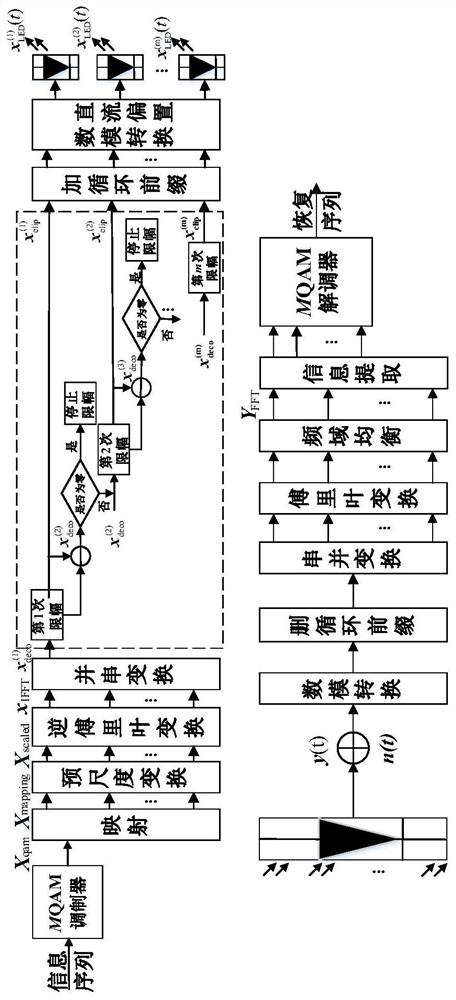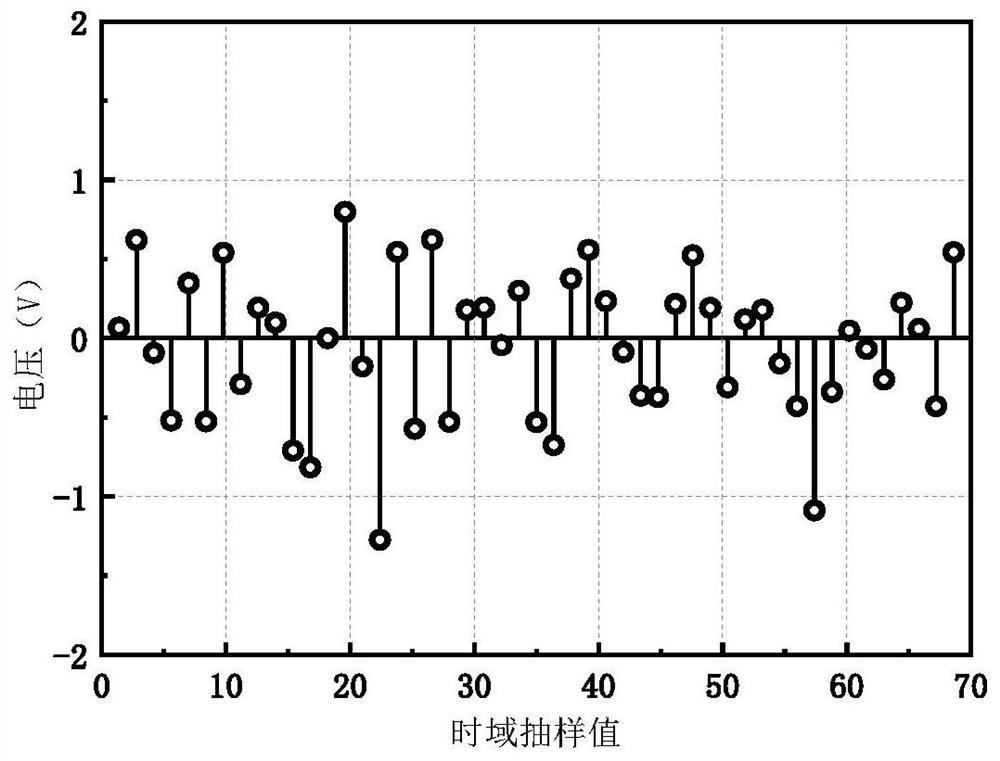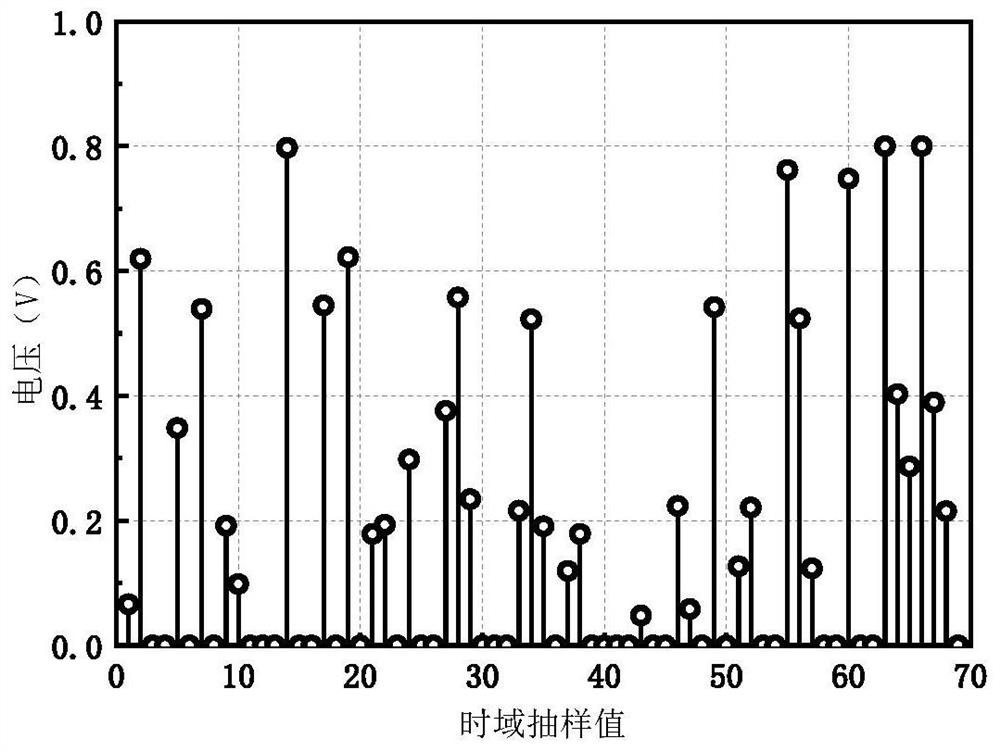Light orthogonal frequency division multiplexing adaptive iteration symbol amplitude limiting method for visible light communication
An adaptive iterative, visible light communication technology, applied in multi-frequency code systems, free space transmission, short-distance systems, etc., to achieve the effects of reducing the number of average symbol decompositions, saving optical power, and improving optical power efficiency
- Summary
- Abstract
- Description
- Claims
- Application Information
AI Technical Summary
Problems solved by technology
Method used
Image
Examples
Embodiment Construction
[0029]The present invention proposes an adaptive iterative symbol clipping (Adaptive Iterative Symbol Clipping, AISC) method of optical OFDM for visible light communication. The O-OFDM symbols are subjected to adaptive iterative symbol clipping, and then the obtained multiple O-OFDM symbols are transmitted to multiple LEDs. Adaptive iterative symbol clipping is the process of repeated clipping of O-OFDM symbols according to their amplitude and clipping threshold. This method can solve the problem that the BER performance deteriorates with the increase of symbol decomposition times when the symbol variance of the traditional ISC method and SDST system is small, and also improves the optical power efficiency and frequency band utilization. At the same time, the problem of low information transmission rate of SDST system and ASDST system is also solved.
[0030] The present invention is an adaptive iterative symbol clipping method of optical orthogonal frequency division multipl...
PUM
 Login to View More
Login to View More Abstract
Description
Claims
Application Information
 Login to View More
Login to View More - R&D
- Intellectual Property
- Life Sciences
- Materials
- Tech Scout
- Unparalleled Data Quality
- Higher Quality Content
- 60% Fewer Hallucinations
Browse by: Latest US Patents, China's latest patents, Technical Efficacy Thesaurus, Application Domain, Technology Topic, Popular Technical Reports.
© 2025 PatSnap. All rights reserved.Legal|Privacy policy|Modern Slavery Act Transparency Statement|Sitemap|About US| Contact US: help@patsnap.com



